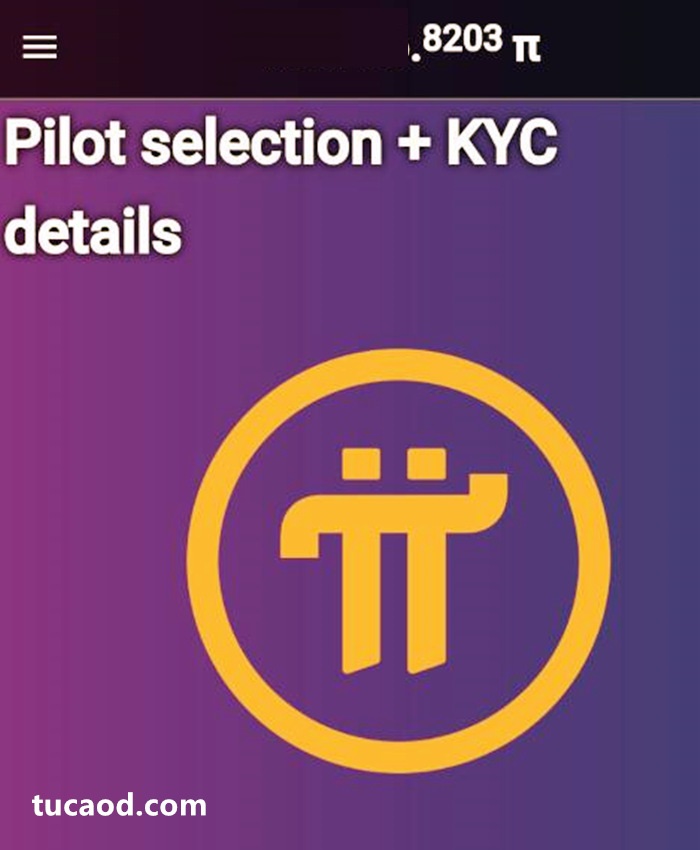神吐槽:解决了好多问题,团队在做事,不要乱问,继续等通知,不要意淫。
自 3 月 14 日 Pi Day 发布以来,KYC 的推出一直在稳步扩大。从那时起,重点一直放在扩展系统和引导人群验证网络上。下面,我们描述了网络规模需要通过的 KYC 漏斗,并为您提供了一些重要的近期进展以及下一步的窗口。
网络KYC漏斗
简单地说,为了扩展 Pi KYC 吞吐量,网络需要扩展网络 KYC 漏斗的每一步,这分为以下三个主要步骤。部分扩容依赖于核心团队一直在努力的系统和算法改进,而其他扩容则依赖于先驱者的参与,即完成KYC申请流程并申请成为验证者。
步骤 1. Pioneers 应邀下载 Pi 浏览器以访问 Pi KYC 应用程序。
步骤 2. 先驱者完成并提交 KYC 申请。
第 3 步:KYC 系统使用机器学习算法和人工验证器处理应用程序。
核心团队的重点主要是扩展第 3 步并减少摩擦以改善第 2 步中的用户体验。同时,先锋可以通过下载 Pi 浏览器为第 1 步做准备来帮助 KYC,一旦他们的 KYC 获得批准,通过申请成为验证者(第 3 步)。
缩放步骤 1
这里有两个变数:首先,核心团队每天随机邀请一定数量的 Pioneer 到 KYC。其次,这些 Pioneers 决定他们是否想在那一刻接受邀请并访问 KYC 应用程序以提交他们的申请。在这一步中,增加进入漏斗的邀请数量在技术上是微不足道的——我们可以简单地邀请所有人。但在我们这样做之前,我们需要确保大量邀请不会造成实际上阻碍引导速度和整体系统扩展的阻塞,因此漏斗的以下步骤不会被阻塞。这就是核心团队对这一步施加限制的原因。在增加邀请之前,核心团队一直专注于以相反的顺序增加以下步骤的吞吐量,即在步骤 3、步骤 2 之前和我们取消对步骤 1 施加的限制之前消除瓶颈。
缩放步骤 2
作为第 2 步的瓶颈示例,许多 Pioneer 在提交 KYC 申请期间遇到了活性检查问题。这种活性测试是 KYC 应用程序的一个关键功能,旨在确定 Pi 帐户持有人是一个真实的人。为此,步骤 2 要求 KYC 申请人根据指令做出一定的面部表情,并由机器和人类验证器进行验证。然而,许多类型的手机型号,主要是较旧的型号,并不总是能够捕捉到这些表情,因此 Pioneers 经常无法完成和提交他们的 KYC 申请。最近的用户体验改进和服务器端算法大大减少了 Pioneers 完成其 KYC 应用程序的摩擦,包括活性检查。
根据流程的持续反馈,通常会在步骤 2 上进行更多的迭代改进。
缩放步骤 3
扩展步骤 3 是一项重大工作,涉及改进系统和在地理上引导人工验证。
系统改进
核心团队在扩展机器自动化方面做出了重大的系统改进。我们添加、改进和扩展了安全措施,例如向验证器显示的图像添加可追溯水印、验证器培训流程以及人工验证器的任务队列。保持验证者排队工作的随机性是一种有意识的系统设计选择,以防止潜在的验证者游戏技巧和勾结。另一个重要的选择是分解每个 KYC 应用程序的验证工作,并将它们分散到多个验证器作为隐私保护措施。然而,这两种选择在完全处理 KYC 应用程序方面带来了挑战,增加了应用程序积压。在这里,优化任务排队算法是关键。它在很大程度上得到了改进,以帮助扩展应用程序处理,从而减少一个应用程序完全处理所需的时间,同时实现 KYC 完整性和隐私这两个目标。
我们很高兴地宣布,在过去的一周里,第 3 步已经停止了 KYC 渠道的瓶颈,现在能够处理比之前的步骤更多的 KYC 申请。

Pi Network开通交易转账了?pi币KYC认证方案细节
请注意,由于我们高度保守的标准,系统仍然产生相对较大的错误拒绝率。因此,对于这些虚假拒绝,我们不会向这些先驱者宣布 KYC 结果,同时我们会不断调整流程并重新处理他们的申请,以减少虚假拒绝并让他们安全获得批准。
从地理上引导验证
由于世界上有多种语言和 ID 类型,KYC 验证是一个本地化过程,它利用了当地 KYC 验证者的知识和熟悉度。因此,需要首先在每个国家或地区启动 KYC 系统。换言之,每个国家或地区都需要足够多的 Validator 来批准其他 Pioneer 的 KYC 申请,从而为 KYC 系统带来更多潜在的 Validator,从而引发良性循环。
迄今为止,Pi KYC 系统已在 77 个国家和地区(约占全球人口的 80%)引导了人工验证劳动力。由于我们的目标是覆盖法律允许的每个区域,因此我们正在不断加紧努力以引导更多地方。我们所做的一项改进——承认活动和自拍检查的相对普遍性——是系统将这些检查的验证者的资格扩大到其国家或地区以外的先驱者,同时仍将验证申请人身份证的真实性限制为验证者所在的国家或地区。再举一个例子,核心团队成员和聊天版主不知疲倦地从非引导的地方验证 KYC 应用程序,直到这些地方出现足够多的验证者。这些选择帮助系统覆盖了那些仍在自举的国家或地区,因此,我们看到自举国家或地区的数量不断增加。
下一步是什么?
除了改善用户体验和引导验证之外,该网络还将同时继续改进其验证算法,以便更多工作可以由机器自动化,从而减少对人工验证器的依赖。这将有助于将 KYC 解决方案扩展到世界各地的先驱者,无论他们的地区或背景如何。
同时,先驱者可以采取两个重要步骤来加快网络的 KYC 验证和后续主网迁移的进度。
首先,需要更多的 KYC 验证者!现在增加成功的 KYC 验证的数量主要取决于每个当地社区中有多少人类验证者。因此,如果您已经通过 KYC 验证,我们鼓励您申请成为验证者。更多 KYC'ed Pioneers 增加了潜在验证者的池。还要记住,验证者将收到从成功的 KYC 申请者那里收集的 Pi 用于他们的工作:)
其次,记得下载 Pi 浏览器! Pi KYC 应用程序只能在 Pi 浏览器上找到,它是新兴的基于实用程序的 Pi 生态系统的平台。一旦 Pioneers 收到其 KYC 插槽已打开的应用内通知,他们将被引导至 Pi 浏览器中的 KYC 应用。时间到了,您应该做好准备!
该网络不断改进 KYC 基础设施,并一路清除技术瓶颈。这导致网络处理 KYC 应用程序的能力显着提高,在 Pioneers 的热情参与下,良好的工作将继续下去。请继续关注更新。
The KYC slot rollout has been steadily scaling since its release on March 14, Pi Day. Since then, the focus has been on scaling the system and bootstrapping the crowd validation network. Below, we delineate the KYC funnel that the network needs to go through to scale, and give you a window into some important recent progress as well as what’s next.
The network KYC funnel
Simply put, in order to scale Pi KYC throughput, the network needs to scale every step of the network KYC funnel, which breaks down into three main steps described below. Some of the scaling depends on the system and algorithm improvement which the Core Team has been working hard on, while other aspects of scaling rely on the participation by Pioneers, namely, completing the KYC application process and applying to become Validators.Step 1. Upon invitation, Pioneers download the Pi Browser to access the Pi KYC app.
Step 2. Pioneers complete and submit the KYC application.
Step 3. The KYC system, using machine learning algorithms and human Validators, processes the application.
The Core Team’s focus has been primarily on scaling Step 3 and reducing friction to improve the user experience in Step 2. At the same time, Pioneers can help with KYC by preparing for Step 1 by downloading the Pi Browser, and once their KYC gets approved, by applying to become a Validator (Step 3).
Scaling Step 1
There are two variables here: Firstly, the Core Team is randomly inviting a number of Pioneers each day to KYC. Second, these Pioneers decide if they want to accept the invitation at that moment and access the KYC app to submit their application. Increasing the number of invitations to enter the funnel is technically trivial in this step – we could simply invite everyone. But before we do that, we need to make sure that the large volume of invitations will not create clogs that actually impede the speed of bootstrapping and overall system scaling, so the following steps of the funnel are not blocked. That's why the Core Team is imposing restrictions on this step. Before increasing the invitations, the Core Team has been focusing on increasing the throughputs of the following steps in reverse order, i.e. removing bottlenecks from Step 3, before Step 2 and before we remove the restrictions imposed on Step 1.Scaling Step 2
As an example of bottlenecks on Step 2, many Pioneers had issues with the liveness check during the submission of their KYC application. This liveness test is a critical feature of the KYC application meant to establish that a Pi account holder is a real human being. To this end, Step 2 requires KYC applicants to make certain facial expressions based on the instructions, which are validated by machine and human Validators. However, many types of phone models, primarily older ones, were not always able to capture these expressions, so Pioneers were often unable to complete and submit their KYC applications. Recent user experience improvements and server-side algorithms have significantly reduced the friction for Pioneers to complete their KYC application, including the liveness check.More iterative improvements will be made generally on Step 2 based on the continual feedback from the process.
Scaling Step 3
Scaling Step 3 is a major endeavor which involves improving the system and bootstrapping human validations geographically.System improvements
The Core Team has made significant system improvements in scaling machine automation. We have added, improved and scaled security measures such as traceable watermarks to images shown to Validators, Validator training processes, and queues of tasks for human Validators. Maintaining randomness in queuing work for Validators is a conscious system design choice to prevent potential Validator gamesmanship and collusion. Another important choice is to break up pieces of validation work for each KYC application and spread them to multiple Validators as a privacy protection measure. These two choices, however, create a challenge in getting a KYC application fully processed, adding to the application backlog. Here, optimizing the task queuing algorithm is key. It has been largely improved to help scale application processing, thereby reducing the time it takes for one application to get fully processed, while achieving the two goals of KYC integrity and privacy.We are happy to announce that, for the past week, Step 3 has stopped bottlenecking the KYC funnel and is now able to process more KYC applications than what is passing through from previous steps.
Note that the system is still producing a relatively large ratio of false rejections due to our highly conservative criteria. So for these false rejections, we withhold announcing KYC results to these Pioneers while we continually tune the processes and reprocess their applications to have fewer false rejections and get them safely approved.
Bootstrapping Validation Geographically
Because of the variety of languages and ID types in the world, KYC validation is a localized process that leverages the knowledge and familiarity of local KYC Validators. Therefore, the KYC system needs to be first bootstrapped in every country or region. In other words, every country or region needs enough Validators to approve the KYC applications of other Pioneers, which brings in more potential Validators to the KYC system, thus setting off a virtuous cycle.To date, the Pi KYC system has bootstrapped the human validation workforce in 77 countries and regions — areas that represent about 80% of the global population. Since we aim to cover every single region permissible by law, we are continuously stepping up our efforts to bootstrap more places. One improvement we have made — recognizing the relative universality in liveness and selfie checks — is that the system widens the eligibility of Validators for these checks to Pioneers outside their country or region, while still restricting the verification of the authenticity of the applicant’s identity card to the Validator’s country or region. As another example, Core team members and Chat Moderators are tirelessly validating KYC applications from un-bootstrapped places until enough Validators from those places emerge. These choices have helped the system cover those countries or regions that are still bootstrapping, and consequently, we see a constant increase in the number of bootstrapped countries or regions.
What’s Next?
In addition to improving user experience and bootstrapping validation, the network will, in parallel, continue to improve its validation algorithm so that more work can be automated by machines, reducing reliance on human Validators. This will help scale the KYC solution to Pioneers around the world regardless of their region or background.At the same time, Pioneers can take two important steps to expedite the network’s progress of KYC verification and the subsequent Mainnet migration.
First, more KYC Validators are needed! Increasing the number of successful KYC validations now primarily depends on how many human Validators there are in each local community. So if you are already KYC-verified, we encourage you to apply to become a Validator. More KYC’ed Pioneers increases the pool for potential Validators. Also remember that Validators will receive Pi pooled from successful KYC applicants for their work 🙂
Second, remember to download the Pi Browser! The Pi KYC app can only be found on the Pi Browser, the platform for the burgeoning utilities-based Pi ecosystem. Once Pioneers receive an in-app notification that their KYC slot is open, they will be led to the KYC app within the Pi Browser. You should be ready when it’s your time!
The network is continually improving the KYC infrastructure and clearing technical bottlenecks along the way. This has resulted in significant increases in the network’s ability to process KYC applications, and with Pioneers’ enthusiastic participation, the good work will continue. Stay tuned for updates.
Pi币代做节点咨询费200元
网页收藏⇒《2021年pi币官方最新消息》
注册教程直接点击⇒pi币注册流程全中文图解_手机短信验证@派币 Pi Network官网
更多免费挖矿直接点击⇒手机挖矿app赚钱靠谱https://www.tucaod.com/tag/linglu

 区块链神吐槽
区块链神吐槽

